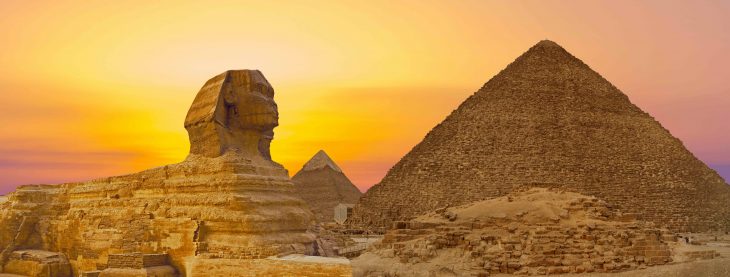
Located in the Sahara Desert, it would come as a surprise that Ancient Egypt would rise in such a harsh and inhospitable land. In fact, it’s for that reason that the Ancient Egyptians considered the Nile River as the source of all life. Without the Nile, the Ancient Egyptian kingdom wouldn’t even exist. We wouldn’t have the pyramids, the Sphinx, and many other legacies they left for us today.
Much of Egypt would be uninhabitable without the Nile. The river is home to many aquatic species as well as hundreds of terrestrial species that live along its banks. Many of the animals that live in and around the Nile are both feared and revered by the locals. Some of them were even worshiped by the ancient Egyptians. Practically everything important in Egypt is next to the Nile or quite near it.
Learn more surprising things about the oldest nation in the world. Check out these 50 Ancient Egypt facts.
- At its height, Ancient Egypt covered an estimated 1 million km² of territory in North Africa and the Middle East.
- It also had an estimated population of 5 million people.
- The Ancient Egyptians used either grain or copper or silver as currency.
- Workers typically earned 5½ sacks of grain in a single month.
- A cow in Ancient Egypt typically cost around 140 deben, or 12.74 kilograms of copper or silver.
- Humans first arrived in the Nile Valley around 5500 BC.
- Pharaoh Narmer first united Ancient Egypt around 3000 BC.
- Old Kingdom built the Great Pyramid of Giza between 2580 and 2560 BC.
- Repeated droughts caused the Old Kingdom to collapse in 2181 BC. This began the First Intermediate Period.
- Middle Kingdom expanded Ancient Egypt’s territories from 2134 to 1690 BC.
- Asian invaders called the Hyksos occupied the Nile Delta during the Second Intermediate Period.
- Pharaoh Ahmose I expelled the Hyksos and founded the New Kingdom around 1550 BC.
- Ancient Egypt fragmented during the Third Intermediate Period, from 1069 to 653 BC.
- Libyans and then the Persians conquered Ancient Egypt during this time.
- The Persians surrendered Ancient Egypt to Alexander the Great in 332 BC.
- Ancient Egyptians used the ankh to symbolize eternal life.
- They only started minting proper coins around the 6th Century BC.
- Historians generally recognize only 30 Ancient Egyptian Dynasties.
- Status of the 31st Dynasty and the Ptolemaic Dynasty remains contested among scholars today.
- Temples in Ancient Egypt doubled as granaries and treasuries.
Was this page helpful?
Our commitment to delivering trustworthy and engaging content is at the heart of what we do. Each fact on our site is contributed by real users like you, bringing a wealth of diverse insights and information. To ensure the highest standards of accuracy and reliability, our dedicated editors meticulously review each submission. This process guarantees that the facts we share are not only fascinating but also credible. Trust in our commitment to quality and authenticity as you explore and learn with us.
